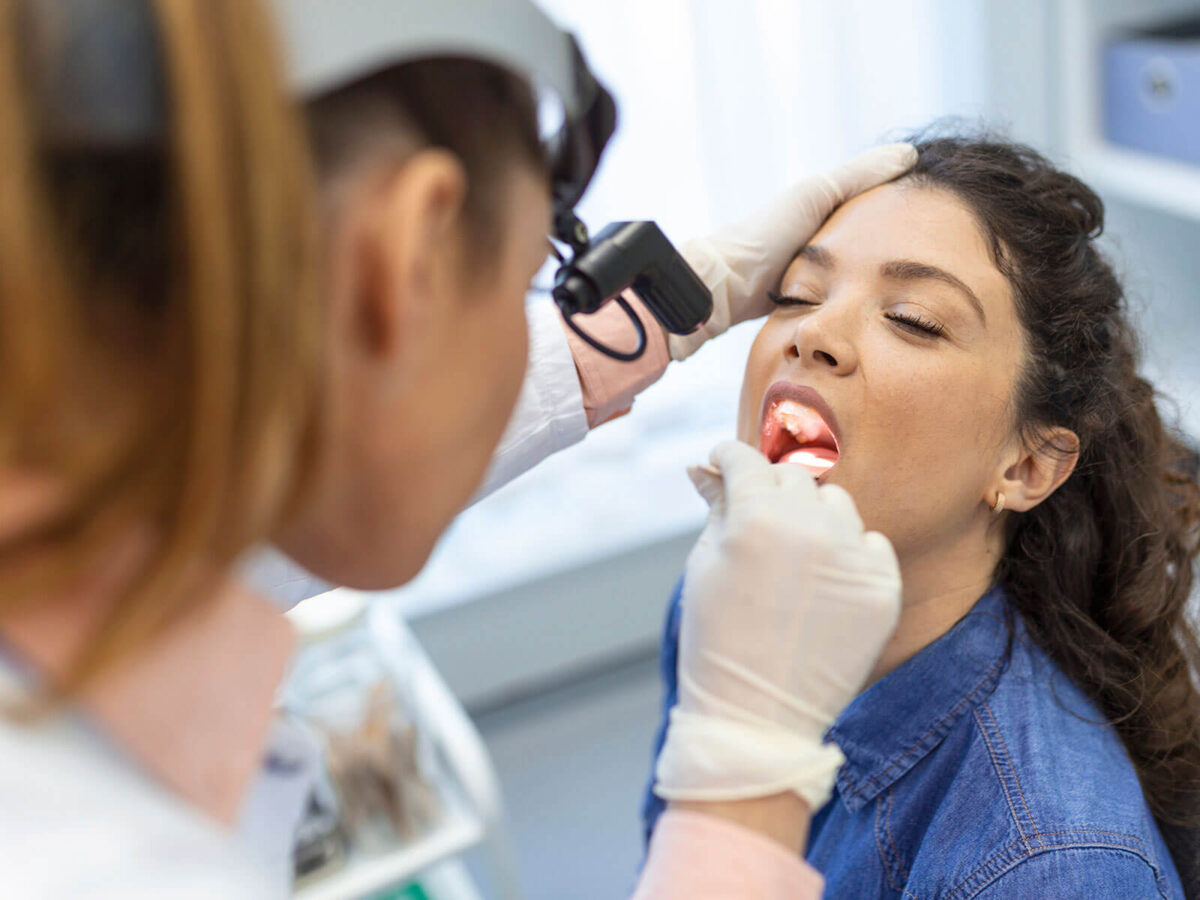Blog
Dental hygiene tips for healthy teeth & gums

The Importance of Oral Cancer Screenings In Preventive Dentistry
Preventive dentistry is essential not only for preserving healthy teeth and gums but also for ensuring total well-being. Oral cancer screenings, which attempt to discover potential problems early, are necessary for preventative dental care. This in-depth overview delves into the significance of oral cancer screenings, their function in preventive dentistry, and how they contribute to overall health and lifespan.
Oral Cancer Screenings Importance
1. Understanding Oral Cancer:
a. Prevalence and Impact: Oral cancer includes cancers of the mouth, lips, tongue, cheeks, throat, and mouth floor. It can affect people of all ages, with risk factors including tobacco usage, heavy alcohol intake, and viral exposure.
b. Importance of Early Detection: Early detection of oral cancer improves treatment outcomes significantly. Identification promptly allows for more conservative and successful therapies, perhaps saving lives.
2. The Role of Oral Cancer Screenings:
a. Routine Examinations: Oral cancer screenings entail a thorough examination of the oral cavity, including the tongue, gums, cheeks, and throat. Dentists frequently perform these screenings during dental check-ups.
Oral cancer screenings allow dentists to detect early warning signals such as odd tumors, persistent sores, or changes in the color or texture of oral tissues. Early detection of these indications allows for timely inquiry and diagnosis.
3. Preventive Dentistry and Total Health:
a. Holistic Approach: Preventive dentistry goes beyond tooth and gum health to total well-being. Regular mouth cancer screenings are a preventative step in an all-encompassing approach.
b. Oral-Systemic Link: The oral cavity is a window into general health, including links to systemic disorders. Early detection of oral cancer may aid in preventing or managing other health conditions.
4. Risk Factors for Oral Cancer:
a. Tobacco Use: Smoking or using smokeless tobacco increases the risk of oral cancer substantially. Individuals with a history of tobacco use should get regular testing.
b. Excessive Alcohol use: Excessive alcohol use has been linked to an increased risk of oral cancer. Routine screenings are critical for people who have a history of heavy alcohol consumption.
c. Human Papillomavirus (HPV): Certain HPV strains have been linked to an increased risk of mouth cancer. Individuals with risk factors require early detection through tests.
5. Advantages of Early Detection:
a. Improved Treatment Outcomes: Early detection of oral cancer often allows for less invasive and more successful treatment alternatives. This could include surgery, radiation therapy, or a mix of methods.
b. Quality of Life Preservation: Early detection helps to preserve the patient’s quality of life. Treatment measures can be less aggressive and less negatively influencing oral functioning and general well-being.
c. Improved Survival Rates: Oral cancer survival rates improve significantly with early detection and rapid treatment. Regular tests are critical in increasing these survival rates.
6. Including Oral Cancer Screenings in Dental Exams:
a. Comprehensive Examinations: During regular check-ups, dentists perform extensive oral examinations. Visual inspections, palpation of oral tissues, and evaluation of any anomalies are all part of this process.
b. Patient Education: Dentists educate patients on the significance of frequent screenings and potential risk factors. Open communication encourages the timely reporting of any changes or concerns.
c. modern technology: Some dental clinics use modern technology, such as fluorescence imaging or salivary diagnostics, to improve the effectiveness of oral cancer screenings. These technologies contribute to the arsenal of early detection tools.
7. Routine Self-Examinations:
a. Patient Empowerment: Dentists educate patients on performing routine self-examinations at home. Between dental visits, patients learn to recognize potential indicators of concern.
b. Prompt Reporting: Encouraging patients to report any changes, persistent sores, or abnormalities as soon as possible ensures that problems are resolved quickly. This proactive attitude is essential in preventative dentistry.
c. Educational programs: Dentists participate in community outreach and educational programs to raise awareness about the importance of oral cancer screenings. Workshops, seminars, and informational campaigns aid in the spread of knowledge.
d. Early Intervention Programmes: Participating in community-based early intervention programs increases access to oral cancer screenings. Collaboration with healthcare providers helps to deliver complete preventative care.
Conclusion
Including oral cancer screenings in preventive dentistry protects smiles and general health. Early identification of oral cancer improves treatment outcomes, enhances quality of life, and increases survival rates. Dentists, empowered patients, and community outreach efforts work together to provide a robust framework for preventative dentistry, ensuring that oral health extends beyond teeth and gums to include overall well-being.
Adopting routine screenings as a standard of service underscores the significance of preventive oral health and demonstrates the dentistry profession’s dedication to saving and improving lives.
